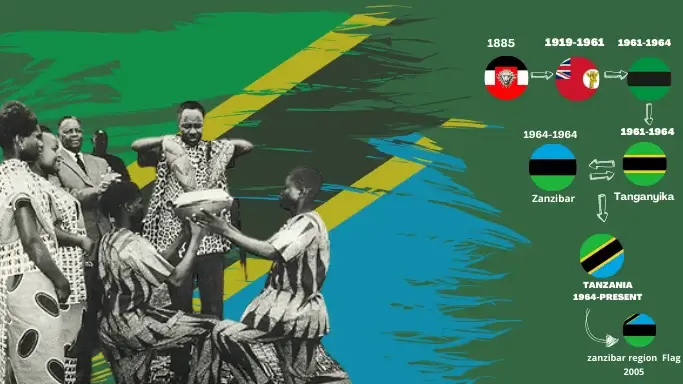The people of Zanzibar are a diverse blend of African, Arab, Somali and Persian heritage, shaped by centuries of trade and migration. The indigenous Swahili culture, influenced by Arabic and Persian traditions, is deeply rooted in the island’s history. Islam is the dominant religion, and Swahili is spoken in its purest form here. Traditional music like Taarab, vibrant festivals, and unique customs reflect Zanzibar’s rich cultural tapestry. Despite economic challenges, Zanzibaris are known for their warmth, hospitality, and strong sense of community, making the island a fascinating blend of history and living traditions.
1. Introduction
Zanzibar, an island rich in culture and history, is home to warm, hospitable people whose daily lives reflect simplicity, community, and a deep connection to tradition. The spirit of “pole pole” (take it easy) defines the island’s relaxed pace, fostering a lifestyle rooted in patience, mindfulness, and genuine human connection. Whether in bustling markets or quiet villages, the people of Zanzibar embody resilience, kindness, and joy despite modest living conditions.
2. Origin of Zanzibaris
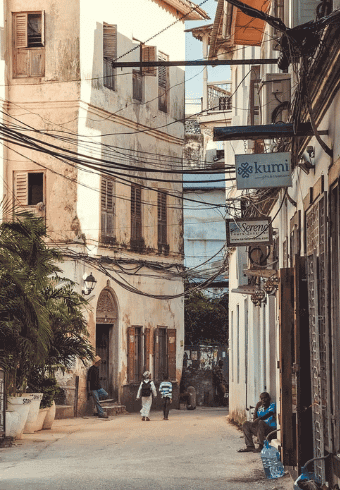
Zanzibar’s earliest known inhabitants likely arrived from the African mainland around 3,000 to 4,000 years ago. However, no direct descendants remain today due to assimilation by later populations. Furthermore, by the first millennium AD, Bantu-speaking migrants from central Africa settled along the East African coast, including Zanzibar, where they interacted with Arab traders from the Red Sea region. Consequently, this cultural exchange gave rise to the Swahili language and culture. From the 10th century onward, Persian immigrants from Shiraz and Arab settlers intermarried with local communities. Moreover, the 18th and 19th centuries saw a significant influx of Omani Arabs, who became Zanzibar’s ruling elite, alongside Indian merchants who established a thriving trade network.
3. Diverse Communities
Zanzibar’s population is a rich tapestry of cultural diversity, primarily comprising Shirazi and Swahili people. They are generally categorized into three groups: the Wahadimu from southern and central Zanzibar Island, the Watumbatu from Tumbatu Island and northern Zanzibar, and the Wapemba from Pemba Island. Due to centuries of African and Arabian migration, tribal distinctions are often fluid. In addition, the islands host descendants of freed slaves from the 18th and 19th centuries, mainland Tanzanian immigrants, and Arabs who returned post-1964 Revolution. Moreover, small communities from Goa, India, Pakistan, and a growing number of European expatriates contribute to Zanzibar’s vibrant cultural mosaic.
4. Religious Influence
Zanzibar’s population of over 1.3 million is primarily composed of Africans and individuals of mixed African-Persian descent, known as the Shirazi, along with Arabs. Although Arabs made up less than 20% of the population at the time of Zanzibar’s independence, they held significant economic and political power until many left following the 1964 Revolution. Furthermore, nearly all Zanzibaris are Muslim, with Islam being a dominant cultural and religious influence, unlike mainland Tanzania, where Muslims make up around a third of the population.

5. Languages of Zanzibar
The indigenous language spoken throughout Zanzibar is Swahili (locally known as Kiswahili). This language is not only the primary tongue of the Swahili people along the East African coast, including Kenya and mainland Tanzania, but also serves as a second or third language across East Africa, from Uganda to Mozambique and parts of the Congo. Despite regional variations, basic Swahili is widely understood, thereby making it the common linguistic thread of the region.
Swahili, an African language enriched with words from Arabic, Persian, Portuguese, and English, has evolved over centuries into a language celebrated for its poetic qualities. Zanzibar is regarded as the cradle of Swahili, where it is spoken in its purest form, particularly in Stone Town and coastal regions of Tanzania and Kenya. In fact, in these areas, everyday conversations often reflect an elegant, almost poetic style, a tradition that diminishes as one moves further inland, where Swahili tends to be simpler.
For visitors, English and other European languages like French and Italian are commonly spoken in Zanzibar Town and tourist hubs. However, learning a few Swahili phrases can greatly enhance your experience, whether you’re greeting locals, navigating markets, or engaging in casual conversation. Even in tourist areas, using basic Swahili adds authenticity to interactions. Additionally, Arabic is spoken, reflecting Zanzibar’s historical ties to the Arab world.
6. Zanzibar’s Dhows

Dhows, traditional wooden sailing vessels of Arabian origin, played a crucial role in shaping Zanzibar’s economy and culture from the 1860s to the 1970s. These vessels were central to trade across the Indian Ocean, carrying goods like cloves, ivory, mangrove poles, and slaves (until the abolition of the slave trade in 1897) to markets in Arabia, India, and East Africa. In return, they brought back essentials such as cloth, rice, coffee, and dried fish. Despite colonial efforts to modernize trade with steamships, the dhow economy thrived, driven by local entrepreneurship. Even after the 1964 Revolution, dhows remained vital to Zanzibar’s informal economy, symbolizing resilience, cultural identity, and the island’s deep connection to the Indian Ocean trade networks.
7. Cultural Legacy
The historical makeup of the Zanzibar people reflects centuries of cultural exchange. Initially settled by African mainlanders, the islands later attracted Arabs and Persians, especially from Shiraz, who played key roles in the trade of slaves, ivory, and spices. Additionally, Portuguese rule began in the late 15th century but gave way to Omani control in 1698, ushering in an era where wealth and power were concentrated among the Arab elite. While Arab-African intermarriage was rare, Africans and Persians often mixed, thereby creating the distinct Shirazi identity that remains integral to Zanzibar’s cultural fabric today.
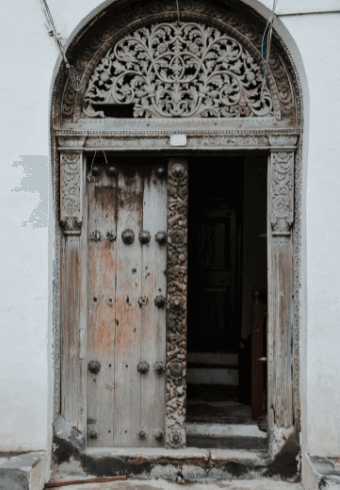
8. Zanzibar’s Traditional Dress
Zanzibar’s traditional dress is a vibrant expression of its rich history, shaped by centuries of cultural exchange through the dhow trade with Arabia, India, Persia, and beyond. The influence of Arab, Persian, Indian, and African cultures is evident in the island’s diverse attire. Men often wear kanzu (white robes of Arab origin), paired with msuli belts and kofia caps, locally known as kibaragashekhe, while enjoying traditional games like bao.
Zanzibari women love to wear colorful, flowing dresses called dear, alongside the iconic khanga, a versatile cloth adorned with vibrant patterns and messages of wisdom. The khanga has evolved from simple white cotton to a symbol of beauty and respect, often worn during weddings, funerals, and social gatherings. Arab influence introduced the baibui(black veils) and nikab for modesty, while Indian and Goan tailoring traditions shaped elegant styles during the colonial era.
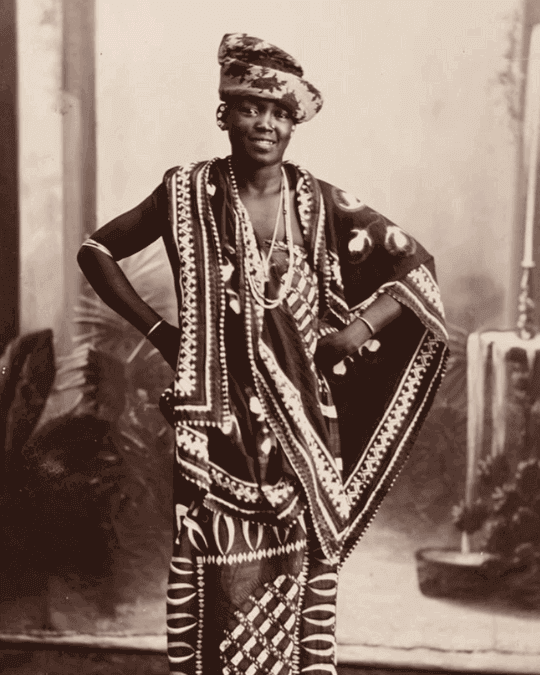
Today, Zanzibar’s fashion thrives with designers like FAROUQUE ABDELA, a renowned fashion icon with deep roots in tailoring and embroidery. Coming from a family of tailors and embroiderers, his great-grandfather was famous for intricate embroidery on men’s wedding robes in the Comoros. After the family moved to Zanzibar, Farouque’s father established a successful tailoring business. Following the Zanzibar Revolution, some family members relocated to England, where Farouque studied fashion in London. In the 1990s, his exquisite designs caught the attention of the late HRH Princess Diana, whom he had the honor of dressing. This milestone propelled his career to international fame, leading him to design costumes for films, television, and theater, blending Zanzibari tradition with contemporary elegance.
9. Zanzibar’s Food and Culinary Traditions: A Fusion of Flavors
Zanzibar’s cuisine is a flavorful blend of Arab, Indian, and African influences, enriched by the island’s spice trade and coastal lifestyle. Known as the “Spice Island,” Zanzibar incorporates fragrant cloves, cinnamon, and cardamom into its signature dishes.
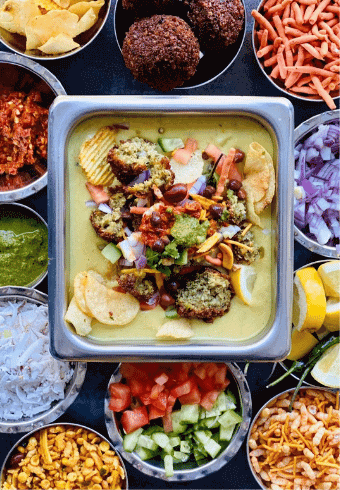
Must-try foods include Zanzibar Pizza, a crispy, stuffed street food favorite at Forodhani Gardens, and Mishkaki, skewered, spiced grilled meat, best enjoyed at Lukmaan Restaurant. Urojo Soup (Zanzibar Mix), a tangy street food delight, is another must-try at Forodhani Market. Seafood lovers will enjoy Octopus Curry and the famous Seafood Platter, showcasing fresh catches from the Indian Ocean.
For sweet cravings, Zanzibar Chocolate, made from locally grown cocoa, is a hidden gem, while Chapati and Mandazi, deep-fried Swahili doughnuts, offer a perfect snack. Other notable dishes include Biryani and Pilau, rich, spiced rice dishes, Coconut Crab Curry, and Chips Mayai, a unique egg and fries combo. Whether you’re indulging in flavors from the street markets or fine dining spots like Emerson Spice, Zanzibar’s culinary traditions promise an unforgettable taste experience.
10. Zanzibar Spices: The Heart of the Spice Island
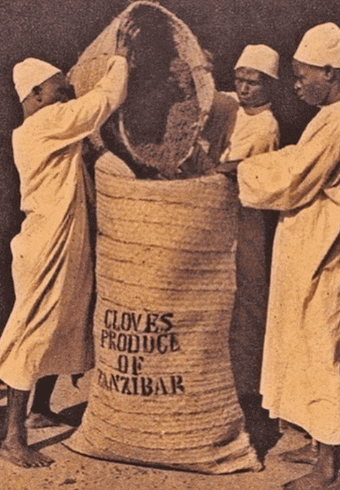
Zanzibar, known as the “Spice Island,” has a deep-rooted history of spice farming, with cloves, cinnamon, cardamom, nutmeg, vanilla, and black pepper shaping its economy and culture. While its role in the global spice trade has declined due to market challenges and government policies, efforts are underway to revive traditional spice forests through sustainable agroforestry. Organizations like Community Forests Pemba (CFP) are helping farmers transition from monoculture to diverse spice forests, improving soil health, increasing income, and empowering women like Bimajo Masoud Juma with financial independence.
Visitors can explore Zanzibar’s spice heritage at farms like To The Hill Kidichi Spice Farms, Siso Spice Farm, and Village Green Spice Farm in Mitakawani, where interactive tours provide insights into spice cultivation, history, and sustainable farming practices. Guides like Omar Hamiz bring these experiences to life, offering educational and flavorful tours followed by authentic local meals. Whether strolling through aromatic plantations or learning from passionate farmers, spice tours remain an unforgettable highlight of any trip to Zanzibar.
11. Music and Icons
Zanzibar boasts a rich musical heritage, blending African, Arab, and Persian influences into unique sounds. The island’s most internationally renowned musician is Freddie Mercury, born Farrokh Bulsara on September 5, 1946, in Zanzibar to Parsi parents, Bomi and Jer Bulsara, followers of the Zoroastrian faith. Interestingly, the Zoroastrian Fire Temple still stands on Nyerere Road near Kilimani Cemetery in Stone Town, marking this cultural connection.
Zanzibar is also the heartland of Taarab music, a captivating form of sung poetry infused with African-Islamic traditions. This genre gained prominence through the legendary Siti bint Saad, the first East African singer to make commercial recordings in 1928. Her pioneering work laid the foundation for Taarab’s enduring popularity, particularly at Swahili weddings, where its melodic rhythms are an essential feature.
Another iconic figure in Zanzibar’s musical landscape is Bi Kidude (Fatuma binti Baraka), celebrated as the “queen of Taarab and Unyago music.” Born around 1910 in Kitumba village, Bi Kidude lived beyond 100 years, becoming the world’s oldest touring singer before her passing in 2013. Inspired by Siti bint Saad, she received the prestigious WOMEX Award in 2005 for her contributions to music and culture. Consequently, her vibrant performances and powerful voice left an indelible mark on Zanzibar’s cultural identity.
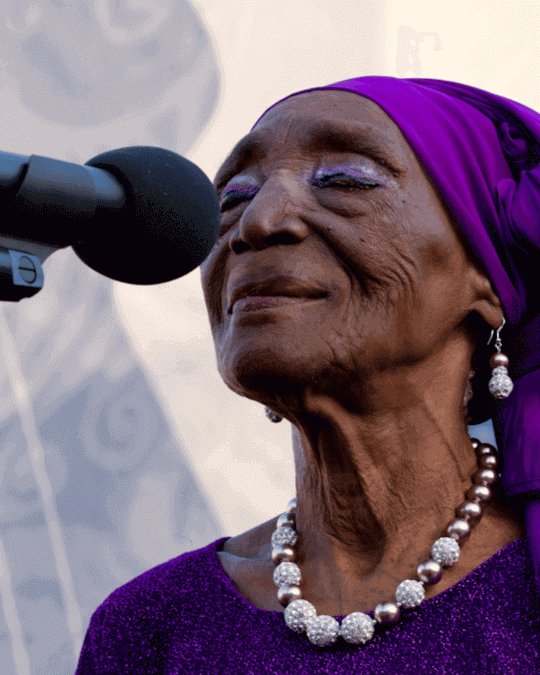
Musical Instruments commonly used in Taarab include violins, accordions, double basses, cellos, tambourines, and the derbouka. These instruments blend traditional African rhythms with Middle Eastern melodies, creating a fusion of sounds that continues to define Zanzibar’s dynamic and ever-evolving musical scene.
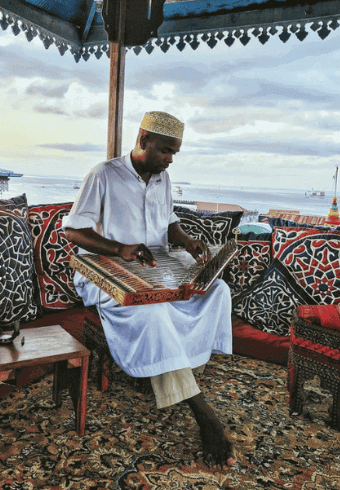
Said Bhai, a talented craftsman from Zanzibar in his late twenties, is recognized as one of Tanzania’s youngest and finest builders of the qanun, a complex stringed instrument from the zither family, native to Egypt and Turkey. Not only does Said masterfully play the qanun, but he also handcrafts it, making him a vital figure in preserving Zanzibari musical culture. His exceptional skills have earned him recognition as one of the first qanun builders in East Africa, showcasing his dedication to traditional music and craftsmanship.
12. Festivals and Celebrations in Zanzibar
Zanzibar is home to vibrant festivals and celebrations that reflect its rich heritage, blending music, film, history, and adventure. Sauti za Busara (February) in Stone Town is one of Africa’s biggest music festivals, featuring live performances and street parades. The Zanzibar International Film Festival (ZIFF) (July) showcases African and international cinema, while Mwaka Kogwa in Makunduchi marks the Persian New Year with traditional rituals and mock fights using banana stems. Eid al-Fitr brings colorful celebrations with prayers, feasts, and cultural performances.
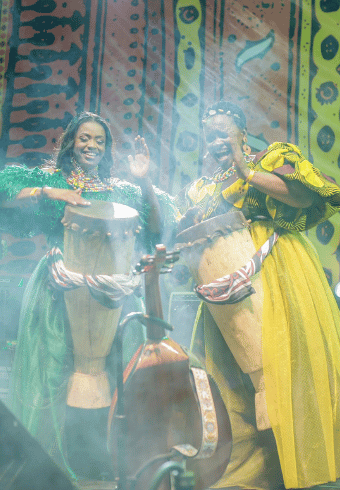
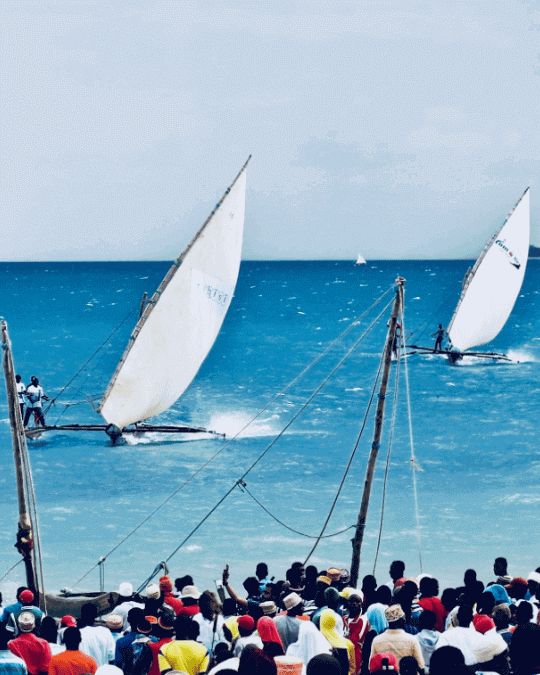
For adventure lovers, the Zanzibar Beach & Watersports Festival (December) in Jambiani offers kitesurfing, beach volleyball, and live music. The Zanzibar Dhow Race, held at various times, highlights the island’s maritime heritage with thrilling traditional sailing competitions. Zanzibar Cultural Day (October 24th) celebrates local traditions through Swahili music, dance, and food. Whether it’s music, film, sports, or history, Zanzibar’s festivals create unforgettable experiences for visitors and locals alike.
13. The Essence of ‘Pole Pole’ in Zanzibar
In Zanzibar, the phrase “pole pole,” meaning “take it easy” or “no rush,” embodies the island’s laid-back lifestyle. This relaxed attitude is infectious, making visitors embrace a slower, more mindful pace. The locals’ positive outlook, even amidst daily challenges, highlights their ability to find joy and contentment in simplicity. This cultural philosophy helps visitors shed their worries, adapting to a lifestyle where stress holds little power.
14. Life and Culture of Zanzibar People
The people of Zanzibar are known for their warmth, resilience, and vibrant cultural heritage. Rooted in the “pole pole” philosophy, Zanzibaris embrace a relaxed, mindful lifestyle filled with genuine hospitality and strong community ties. Morning routines can range from peaceful to lively, with the clatter of coconuts being chopped or cows greeting the day with hearty “moos.” Despite basic living conditions, with many homes lacking beds and electricity, the villagers’ warmth and readiness to help shine through. A simple “Jambo” (hello) often transforms strangers into “rafiki” (friends), fostering genuine connections. The Maasai, frequently seen along the beaches, embody this spirit of friendship, sharing stories and cultural traditions. Zanzibar’s unique rhythm, evident in leisurely restaurant service and laid-back city life, reflects a cultural embrace of patience and presence. This blend of simplicity, connection, and joy offers visitors an authentic glimpse into the heart of Zanzibari life.
15. Life in a Zanzibar Village
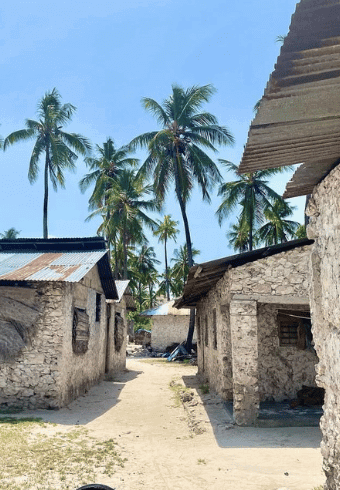
Life in a Zanzibar village is a harmonious blend of simplicity, community, and rich cultural traditions. Villages like Matemwe, Jambiani, Kizimkazi, Paje, Makunduchi, Bwejuu, Michamvi, and Uroa offer authentic experiences beyond tourist hotspots. Here, wooden gates replace security codes, and daily life revolves around fishing, seaweed farming, and local crafts, with routines shaped by nature’s rhythms. The villages buzz with the sounds of cheerful children, seaweed drying in the sun, and fishermen sailing traditional dhows. Local markets offer basic necessities, often doubling as post offices, while women sell fresh samosas and pastries wrapped in newspapers. The warm hospitality, traditional Swahili culture, vibrant local markets, serene beaches, and laid-back “pole pole” (take it easy) lifestyle define the true spirit of The Zanzibar people, offering an authentic glimpse into the island’s rich heritage and communal spirit..
16. A Glimpse into Local Education
Education in Zanzibar reflects both the island’s cultural values and its economic challenges. A significant portion of the population is under 15 years old, creating a youthful demographic that relies heavily on the local education system. While primary and secondary schools are accessible, many students drop out before completing their studies due to financial constraints, early marriages, and limited resources. Classrooms are often modest, with basic furniture and supplies, and some schools lack electricity. Despite these challenges, children show great enthusiasm for learning, and schools foster a strong sense of community, welcoming visitors with songs and smiles. Efforts to improve access to quality education continue to be a priority in Zanzibar’s development.
17. Living the Zanzibar Way: Community, Culture, and Giving Back
Life in Zanzibar is deeply rooted in community, culture, and faith, with the spirit of Waqf—a form of charitable givingplaying a big role in daily life. Waqf has been part of Zanzibar’s history since the early days of Islam’s arrival in the 7th century, growing stronger during the Sultanate period (1832–1890) and continuing under government management today. Waqf is when people donate money, land, or property to support important causes like schools, hospitals, mosques, and helping the poor. This tradition helps provide affordable housing, healthcare, and education for those in need. Despite some challenges, Waqf continues to strengthen Zanzibar’s communities by promoting kindness, reducing poverty, and preserving cultural heritage, creating a strong sense of togetherness and shared prosperity.
18. Beach Life and Seaweed Farming
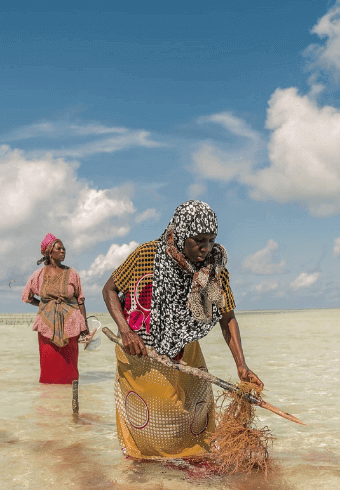
Beach life in Zanzibar is vibrant and deeply connected to the island’s natural resources, with seaweed farming playing a crucial role in the local economy. After school, children gather on the beaches for swimming, football, and family time, while many families rely on fishing and seaweed farming for their livelihoods. Seaweed farming, which began in 1989, now employs over 25,000 farmers—more than 80% of whom are women, making it the third-largest industry after tourism and clove trade. The harvested seaweed is dried under the sun along the shores before being sold locally or exported. This sustainable practice not only supports local communities but also strengthens Zanzibar’s cultural and economic ties to the ocean, empowering women and promoting environmental stewardship.
19. Cultural Insights with the Maasai
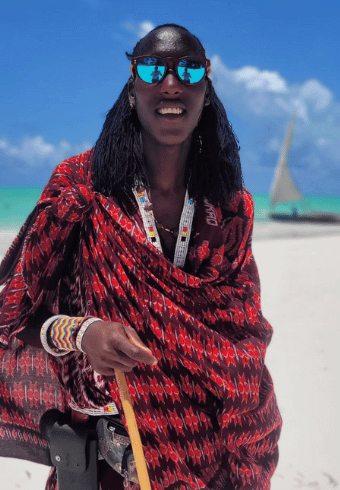
Are the Maasai in Zanzibar fake? No, they are not. The Maasai seen in Zanzibar are authentic members of the Maasai tribes from Kenya and mainland Tanzania, including regions like Tanga, Mara, and Kwediboma etc . Interestingly, Maasai from different areas are often found on different beaches in Zanzibar, some travelers meet Maasai from Tanga, while others encounter those from the Mara region or Kwediboma. This variation can create confusion about their authenticity, especially since there is a perception that wearing a Maasai shuka helps boost sales, leading some non-Maasai vendors to adopt the attire for commercial purposes. However, many tourists have shared meaningful experiences with genuine Maasai individuals who proudly discuss their heritage, including tribal markings, traditional medicine, and rites of passage. This highlights the importance of questioning assumptions, as cultural dynamics and misinformation can easily influence perceptions.
Interactions with Maasai visitors reveal fascinating cultural traditions. Known for their distinctive attire and jewelry, Maasai share stories of rites of passage, traditional medicine, and the symbolic value of cattle. Their resilience and pride in heritage offer profound lessons about identity and community.
20. Unity in Diversity
Zanzibar’s magic lies in its people, where unity thrives despite differences in backgrounds, lifestyles, and histories. The island’s vibrant spirit is shaped by a shared Zanzibari identity that transcends cultural and political divides. Once marked by political tensions between the Chama Cha Mapinduzi (CCM) and the Civic United Front (CUF), Zanzibar has gradually embraced reconciliation through dialogue and a focus on common goals.
Today, this spirit of togetherness is felt beyond politics in shared meals, beach games, and simple conversations where visitors and locals connect on a deeply human level. Zanzibar teaches us that beneath diverse experiences, we all belong to the same global tribe, TUKO PAMOJA (we are together).



